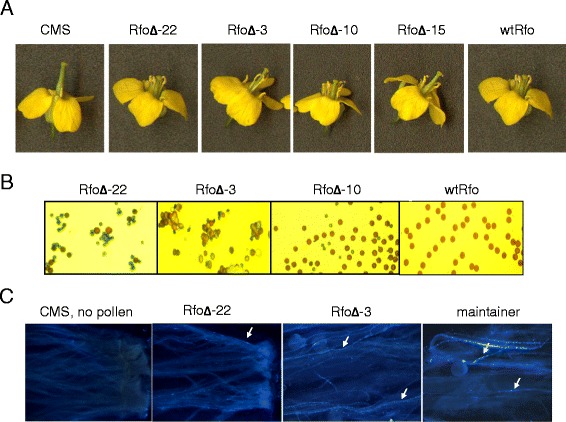Figure 3.

Characterization of RfoΔ T0 generation phenotypes. (A) From left to right, flowers from the non-transformed CMS recipient line, T0 RfoΔ transformants displaying progressively higher degrees of male fertility, and a completely male fertile plant transformed with the wtRfo construct. (B) Pollen grains from (left to right) progressively more sterile T0 RfoΔ transformants and a wtRfo transformant stained with the vital stain described by Alexander [29]; non-viable pollen stains green, viable pollen stains reddish brown. (C) Germination of pollen from a more sterile (plant 22) and a more fertile (plant 3) RfoΔ transformant and from the completely male fertile CMS maintainer line, cv “Westar”. The arrows point to brightly fluorescing extensively elongated tubes; for the more sterile plant RfoΔ-22 plant, only a few of the grains germinated to form long pollen tubes; more germination can be seen in the style pollinated by the more fertile RfoΔ-3 plant.
